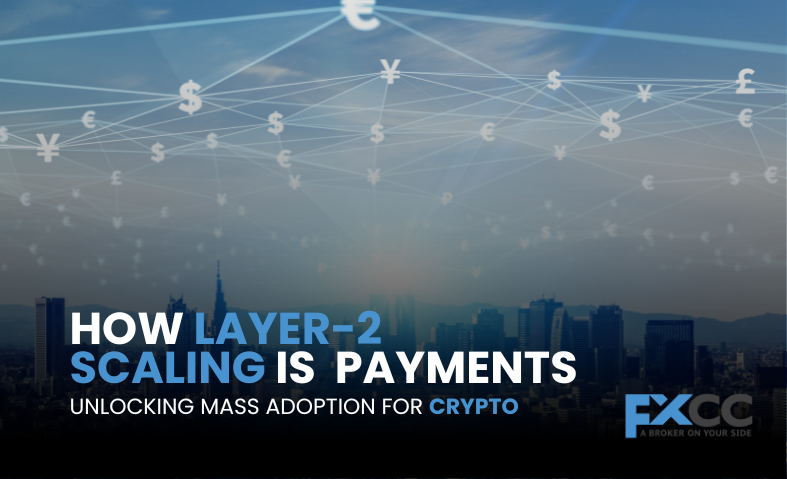Cryptocurrencies have come a long way since Bitcoin first appeared in 2009. What started as a niche idea has grown into a global movement, with millions of people using digital assets for everything from investing to online shopping. But despite their potential, cryptocurrencies have faced one major hurdle: scalability. This is where Layer-2 scaling solutions come in, and they’re playing a key role in making crypto payments faster, cheaper, and more accessible to everyone.
The Problem with Layer-1 Blockchains
To understand why Layer-2 solutions are so important, let’s first look at the limitations of Layer-1 blockchains like Bitcoin and Ethereum. These blockchains are the foundation of the crypto world, but they have a big problem: they can only handle a limited number of transactions per second. For example, Bitcoin processes around 7 transactions per second, while Ethereum handles about 30. Compared to traditional payment systems like Visa, which can process thousands of transactions per second, this is painfully slow.

This lack of scalability leads to two major issues: high fees and slow transaction times. During periods of high demand, users often have to pay exorbitant fees to get their transactions processed quickly. This makes small, everyday payments—like buying a cup of coffee—impractical with crypto. It’s no wonder that mass adoption of crypto payments has been slow to take off.
What Are Layer-2 Scaling Solutions?
Layer-2 scaling solutions are technologies built on top of Layer-1 blockchains to improve their performance. Instead of trying to change the underlying blockchain, Layer-2 solutions work alongside it, handling transactions off-chain and then settling the final results on the main chain. This approach reduces the load on the main blockchain, making transactions faster and cheaper.
There are several types of Layer-2 solutions, but the most popular ones include:
- Rollups: These bundle multiple transactions into a single one, which is then recorded on the main blockchain. This reduces congestion and lowers fees. Examples include Optimistic Rollups and zk-Rollups.
- Sidechains: These are independent blockchains that operate alongside the main blockchain, enabling transactions to occur separately while maintaining a connection to the primary network.
- State Channels: These allow users to conduct multiple transactions off-chain, with only the final result being recorded on the main blockchain. This is great for use cases like micropayments.
- Plasma: A framework for building scalable applications that handle transactions off-chain while still being secured by the main blockchain.
How Layer-2 is Driving Crypto Payment Adoption
Layer-2 solutions are solving the biggest pain points of crypto payments, making them more practical for everyday use. Here’s how:
- Lower Fees: By moving transactions off the main chain, Layer-2 solutions drastically reduce fees. This makes it feasible to use crypto for small purchases, like groceries or streaming subscriptions.
- Faster Transactions: Layer-2 solutions can process transactions in seconds, compared to minutes or even hours on Layer-1 blockchains. This speed is crucial for real-world applications, like paying at a retail store.
- Improved User Experience: With lower fees and faster transactions, using crypto becomes as easy as using a credit card or mobile payment app. This simplicity is key to attracting mainstream users.
- Scalability for the Future: As more people adopt crypto, the demand for transactions will only grow. Layer-2 solutions ensure that blockchains can handle this increased load without becoming congested or expensive.
Real-World Examples of Layer-2 in Action
Several projects are already using Layer-2 scaling to enable crypto payments. For instance:
- Lightning Network: Built on Bitcoin, the Lightning Network allows for instant, low-cost transactions. It’s being used for everything from tipping content creators to buying goods online.
- Polygon (formerly Matic): A popular Layer-2 solution for Ethereum, Polygon is powering decentralized apps (dApps) and payment platforms that offer fast and affordable transactions.
- Loopring: This zk-Rollup-based solution is enabling decentralized exchanges (DEXs) and payment systems that rival traditional finance in terms of speed and cost.

The Road to Mass Adoption
Layer-2 scaling is a game-changer for crypto payments. By addressing the issues of high fees and slow transactions, it’s making digital currencies more practical for everyday use. As more businesses and consumers realize the benefits of fast, low-cost payments, the adoption of crypto is likely to accelerate.
However, there are still challenges to overcome. Layer-2 solutions need to become even more user-friendly, and education is key to helping people understand how they work. Additionally, regulatory clarity will play a big role in shaping the future of crypto payments.
In the end, Layer-2 scaling is not just a technical upgrade—it’s a bridge to a future where crypto payments are as common as using a debit card. And as this technology continues to evolve, the dream of mass adoption is becoming a reality.


